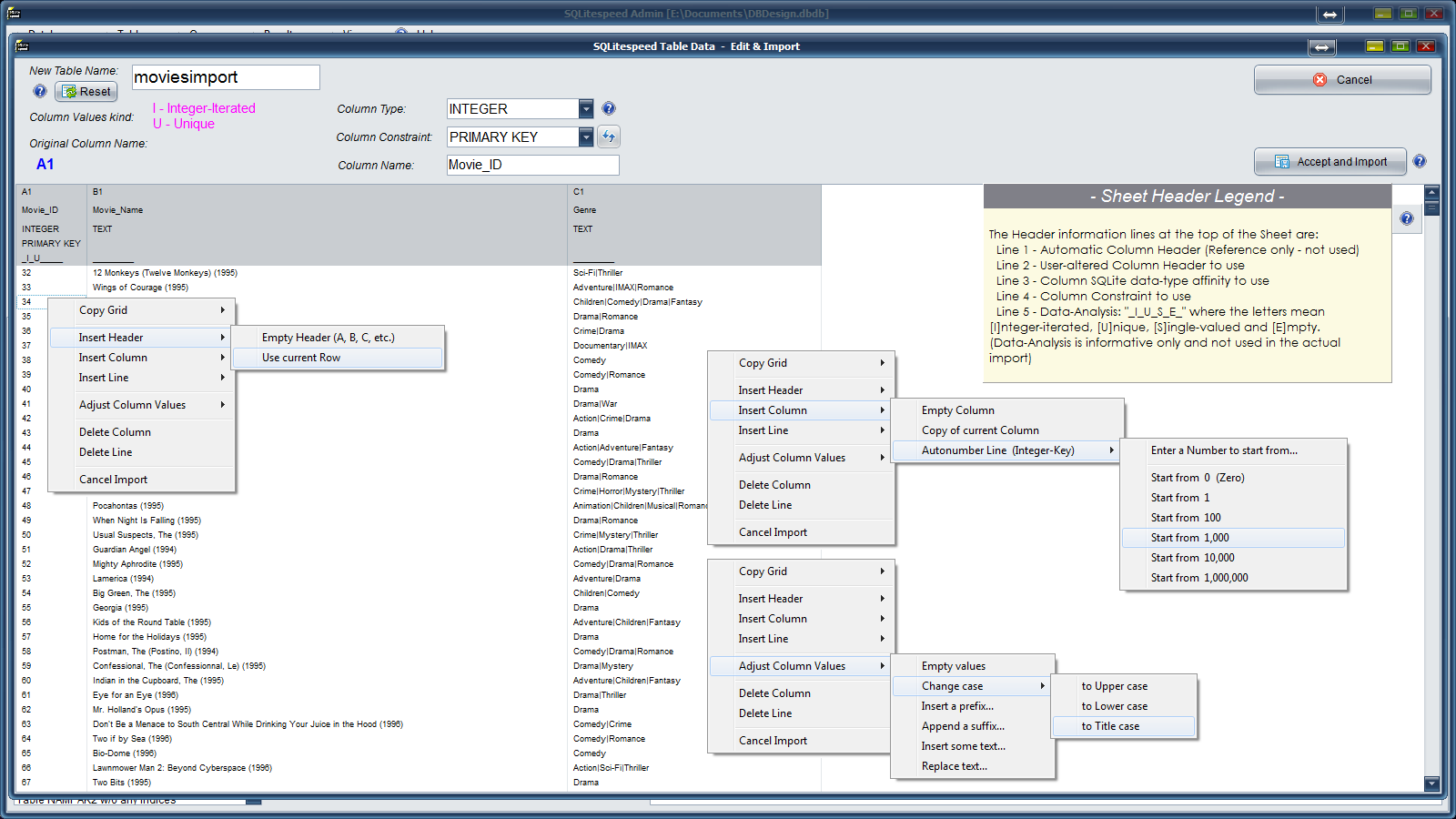

New table in any data source of any database vendor. Context menu of a table Copy Table to (or just F5 on a table) Choose existing table. Context menu of a table Dump data to file. Step 5: Examine your table sqlite> select * from tblMySample įor the sake of completeness, I repeat the steps above using ^ as the delimiter: here's my session: sqlite>. You can use the parameters of the Import-Csv cmdlet to specify the column header row and the item delimiter, or direct Import-Csv to use the list separator for the current culture as the item delimiter. Export data What and where Table A table can be exported to: File.

import -skip 1 E:/CSV/sample.csv tblMySample Step 4: Read the CSV which contains columns delimited by | sqlite>. Step 3: Drop the target table (if it exists) sqlite> drop table if exists tblMySample using \t as separator, even though I switched to csv mode. If the first row of your SSV file does not contain unique column names then you must define the table to import the data into first then do the same commands. (1) By Oliver Bandel (oliban) on 17:22:39 linksource I have a problem with importing a tsv file. If the first row contains unique column names then you can import the file with. The second line contains column names and is followed by two rows of data. For the second set of commands you forgot to set. fPIC -dynamiclib vsv.c -o vsv.dylib got 4 warnings on compilation, still tested it with: SELECT loadextension ('vsv') CREATE VIRTUAL TABLE temp.vsv USING vsv (filename'./sample. you can specify any arbitrary single character delimiter. I compiled vsv.c with the source of SQLite 3.32.0: curl -remote-name ' gcc -g -I.

Step 2: My file is SAMPLE.CSV examine your file to ensure that the first line is inserted correctly. Step 1: Edit your CSV file using any text editor and add the following as the first line in your file here I am using | as the delimiter. import with the pipe operator to invoke cat - to read directly from standard input. import, but that doesn't read /dev/stdin or a temporary named pipe. import, using the following text as a guide. 4 Answers Sorted by: 9 I found an even simpler solution that still uses sqlite3. import, (that is, the CLI) you can use any delimiter using the technique illustrated below (Iam using Windows). This instructs SQLite3 to process files with comma-separated data. import csvtosqlite all the usual options are supported options csvtosqlite.CsvOptions(typingstyle'full', encoding'windows-1250') inputfiles 'abilities.csv', 'moves.csv' pass in a list of CSV files csvtosqlite.writecsv(inputfiles, 'output. If you are using the CSV extension, the approach detailed below may or may not work I have been unable to compile the extension and therefore I am unable to test. Request to allow the CSV Virtual Table module () to support additional delimiters


 0 kommentar(er)
0 kommentar(er)
